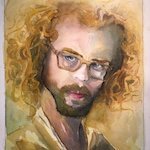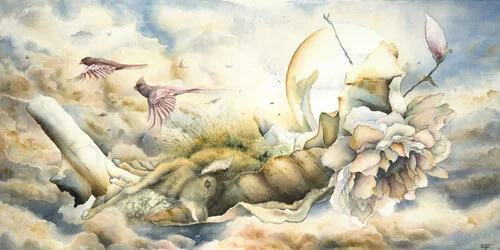
I didn’t start making art until after I’d graduated from college. While I never got much of an artistic education, it turns out that you can learn a great deal if you are persistent (read: stubborn) enough. After a few years of study in McGuffey Art Center’s figure drawing sessions, I eventually produced a drawing that was put in a show. Someone asked me, “What is this drawing about?” I blanked: my art wasn’t “about” anything. I just wanted to be an artist.
So I studied Dalí and Picasso, Tamer and Turner and Shuptrine, Monet and Mucha, Van Gogh. I was not only in love with the beauty and skill of their work, but also with the way their art really seemed to be about something.

Now ten years in, I am trying to coin a new genre of art with my watercolors: Mystical Realism. I paint representationally those things like the Rivanna river spirit or old guru sycamores, tiny gods. I also paint without contrived intent, allowing whatever symbols and relationships to come through into the painting.

Early on, I tried my hand at art nouveau and impressionism for their visually compelling styles. I foolishly thought they’d be easier for what I perceived to be their simplicity. I learned that “simple” art is wildly difficult. So I now focus on technique and beauty, and I keep the faith that whatever flows through me will resonate with someone out there.
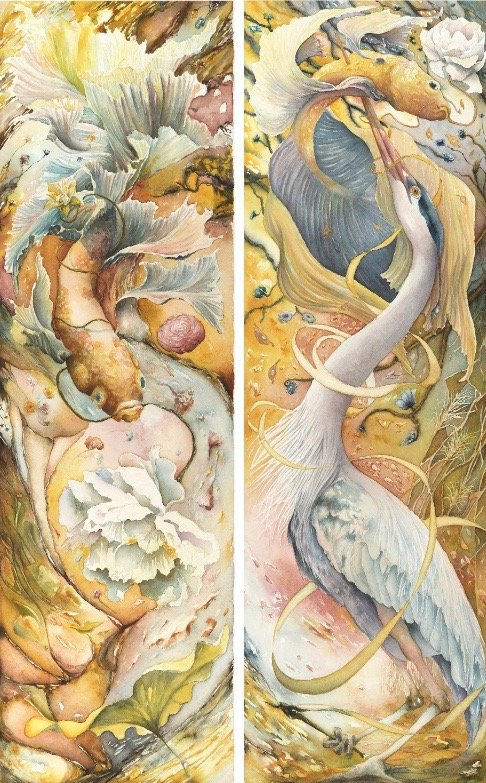
My mentor, Charlottesville artist Robert Bricker, turned me on to Japanese woodblock prints and watercolors. He showed me their efficient use of space in composition, and how they were able to do simplicity so well with the “nailhead – mousetail” line technique—the turning of form simply by varying the line weight. You can see the influence on my paintings in a piece like Boon, which features a very flattened, vertical composition.
I still use these compositional strategies, but once introduced to more modern American watercolorists who allow figure and background to melt organically into one another, I became disillusioned with lines and have attempted to remove them entirely from my painting process.
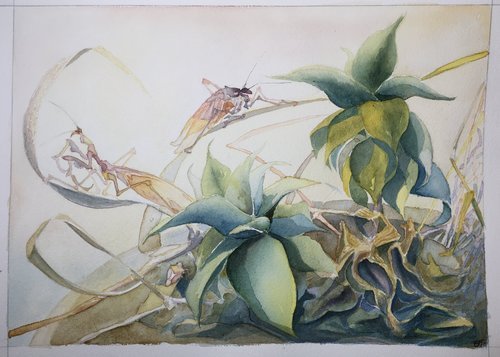
I came up with a technique for creating organic lines while attempting to imitate Asian watercolors: the “flood and suck” wash. This technique of line-making can be seen in my painting of a praying mantis and a grasshopper. Each segment of their bodies is its own discrete wash, and the lines around each segment are organic and vary in weight. I lay down a wash, the edges of which will become the lines I am trying to create. As soon as the shape of the wash is laid down, I accomplish this by flooding a wash with clean water which creates these lines by pushing the pigment particles to the edges of the wash. After pulling the water back out,all that is left are these beautiful lines.
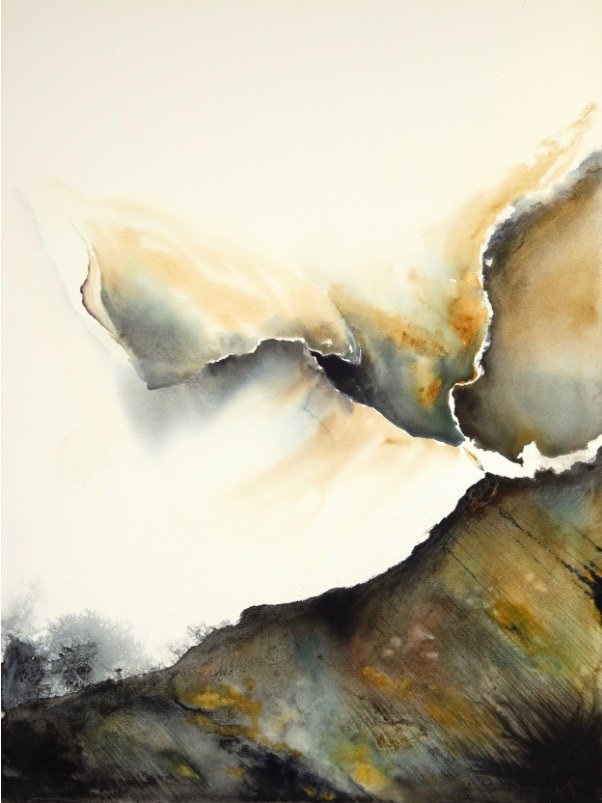
These days, I am studying the techniques of Wyeth, Shuptrine and Tamer while keeping my attention on Appalachian nature, culture, and queerness. These artists beautifully convey the familiar quiet, the rough textures, and the subtle relationships we Americans have with our overgrown past. Tamer is a contemporary Italian painter but uses similar techniques. The rundown barns, vine-covered grain silos, the cracked skin of a farmer or a lighthouse keeper; these things felt like home to me.
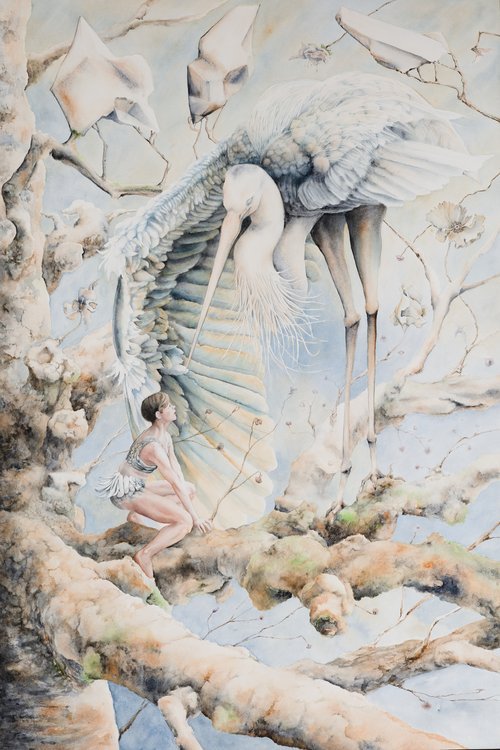
These are masters of wet-in-wet technique with dry-brush over top. I am actively studying this combination. In Sermon of Feather and Wood, for instance, the beautiful blooming depths of wet-in-wet is shown in the heron’s plumage and the figure’s flesh. I also have begun to use dry-brush to convey the texture of bark or of distant trees.

And then there is the more modern technique of granulation, which I see in the works of contemporary European watercolorists such as Marc Folly, Naomi Tydeman and to a certain extent, Marzio Tamer. Granulation is when the pigment particles separate from the binding agent and begin to flow and clump together, forming incredibly intricate patterns and textures. I often build my underpaintings with granulating washes to ensure that there is at least a foundation of interesting texture throughout the painting. Where more detail or specific texture is needed, I will then go over that wash with drybrush. But sometimes, as in the ground of Deus Innominate, I allow the granulation effect to take center stage. Here it not only describes the texture of the marshy field, but it alludes to the patterns of mycelium, which relate to the mycological deity floating in the sky.
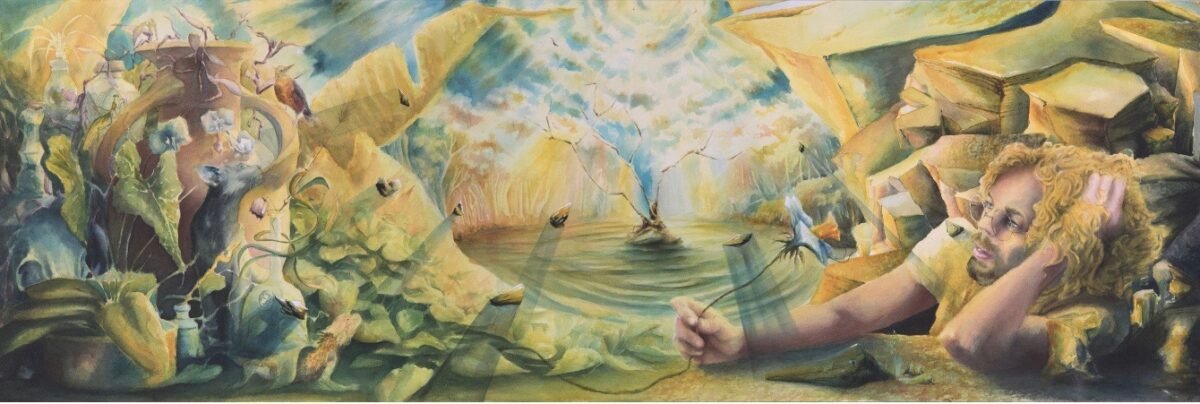
In my upcoming show, Meet Them, Anna Fox Ryan and I each approach non-physical reality from different angles; our shared goal is to allow viewers to see something unknown to their eyes yet familiar to their souls.
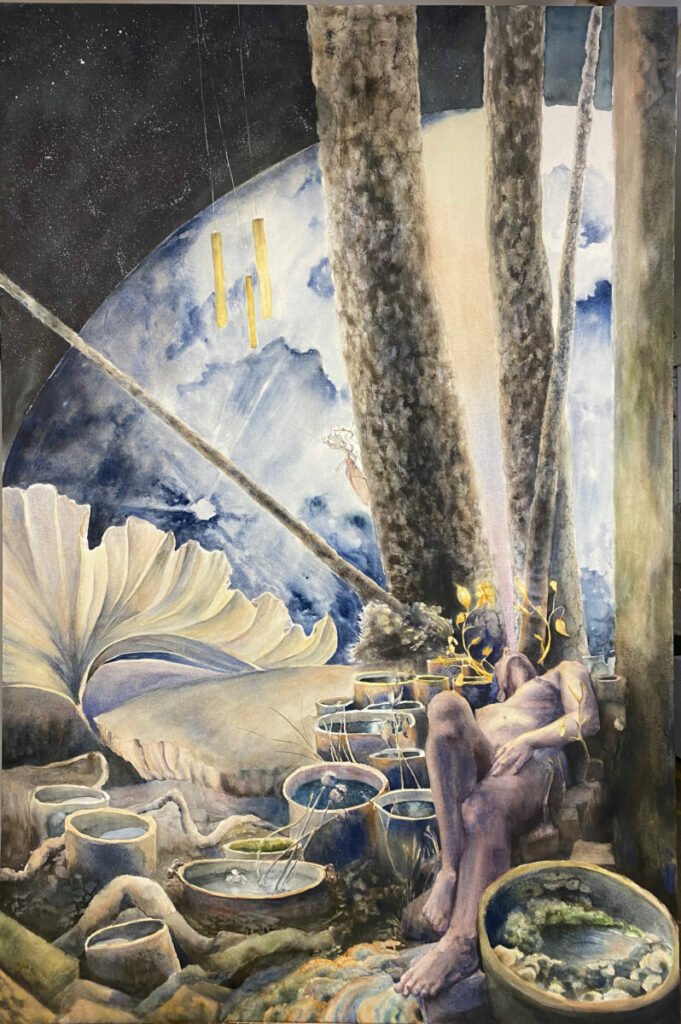
My pieces feature queer bodies set in abandoned industrial structures that the forest has reclaimed along the Rivanna river. I present these figures as mostly androgynous and very much as natural elements that are as much a part of the scene as the vines or the old bricks that compose them.

Share this post with your friends.

